
It was bittersweet pumping for the last time when Nori entered 15 months. My breastfeeding journey was one of ups and downs – sometimes it felt completely time and energy-consuming, but at the same time it was rewarding and something I deeply cherished between us. I supplemented with formula at times and am a big proponent of feeding your baby whichever way is best for your family. In that spirit, I wanted to share a few things that helped me along the way (or that I wish i knew sooner!). I hope it can encourage any new mamas feeling as lost or frustrated in this process as I once did!
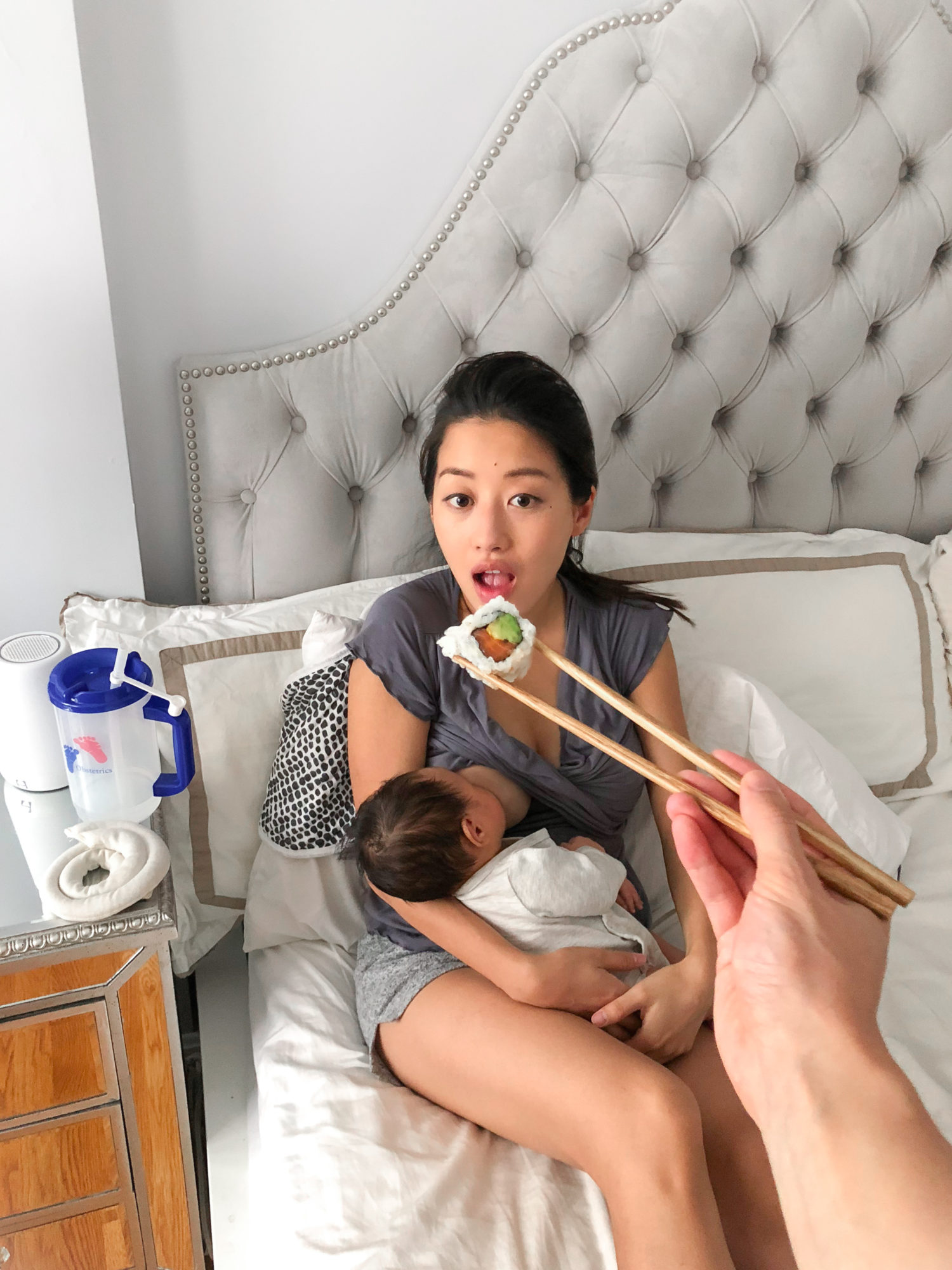
1. SET UP a portable nursing / pumping “station”
I kept my nursing & pumping essentials in a large felt organizer caddy like this one for portability.
- Haakaa silicone milk catcher w/ lid). Since milk letdown usually happens on both breasts at the same time, I used to have a lot of leakage on one side while nursing Nori on the other. This gadget was great for catching milk that would otherwise be wasted, though I only used this at home because it protrudes. The silicone suction creates a gentle pull to help draw out the milk. However, this is not a replacement for an electric breast pump because the ability to empty your breast of milk is not the same. PS – here’s a hack for securing it.
- Sunflower lecithin (also at Target) was a must for me to prevent clogged milk ducts. I started taking this daily and never had a clogged, lumpy milk duct issue again, until during a trip when I forgot to pack some!
- My Brest Friend nursing pillow. You certainly don’t need a nursing-specific pillow, but I like this to help with posture and personally much preferred this over the Boppy, which is very round so Nori couldn’t lie stably on top. It’s personal preference so ask mama friends to try or borrow theirs if possible. I used this pillow around the clock first few months.
- Nipple balm. Another item that I used religiously the first few weeks. After my nipples “toughened up” and didn’t need this anymore, I used it as a lip balm.
- Boob heating pads. Another item you don’t need, but I LOVED these and they really provided relief when I had clogged ducts or other painful conditions. I microwave these and then insert into a loose bra for 5 minutes, and then massage the breast right before nursing or pumping. I have the Earth Mama brand which is now hard to find, but these are made of pretty much the same composition and have great reviews.
- Giant water bottle, snacks, TV remote and phone charger within easy reach. Workin’ Moms or Letdown on Netflix are both apropos shows to watch during this time ; ) Some of my smart friends also had chair massagers and lactation cookies at their pumping stations. I don’t know if these dairy free lactation cookies worked in terms of increased milk production, but they didn’t hurt because they’re delicious. Several of you also told me you baked these for friends after they gave birth – so thoughtful!
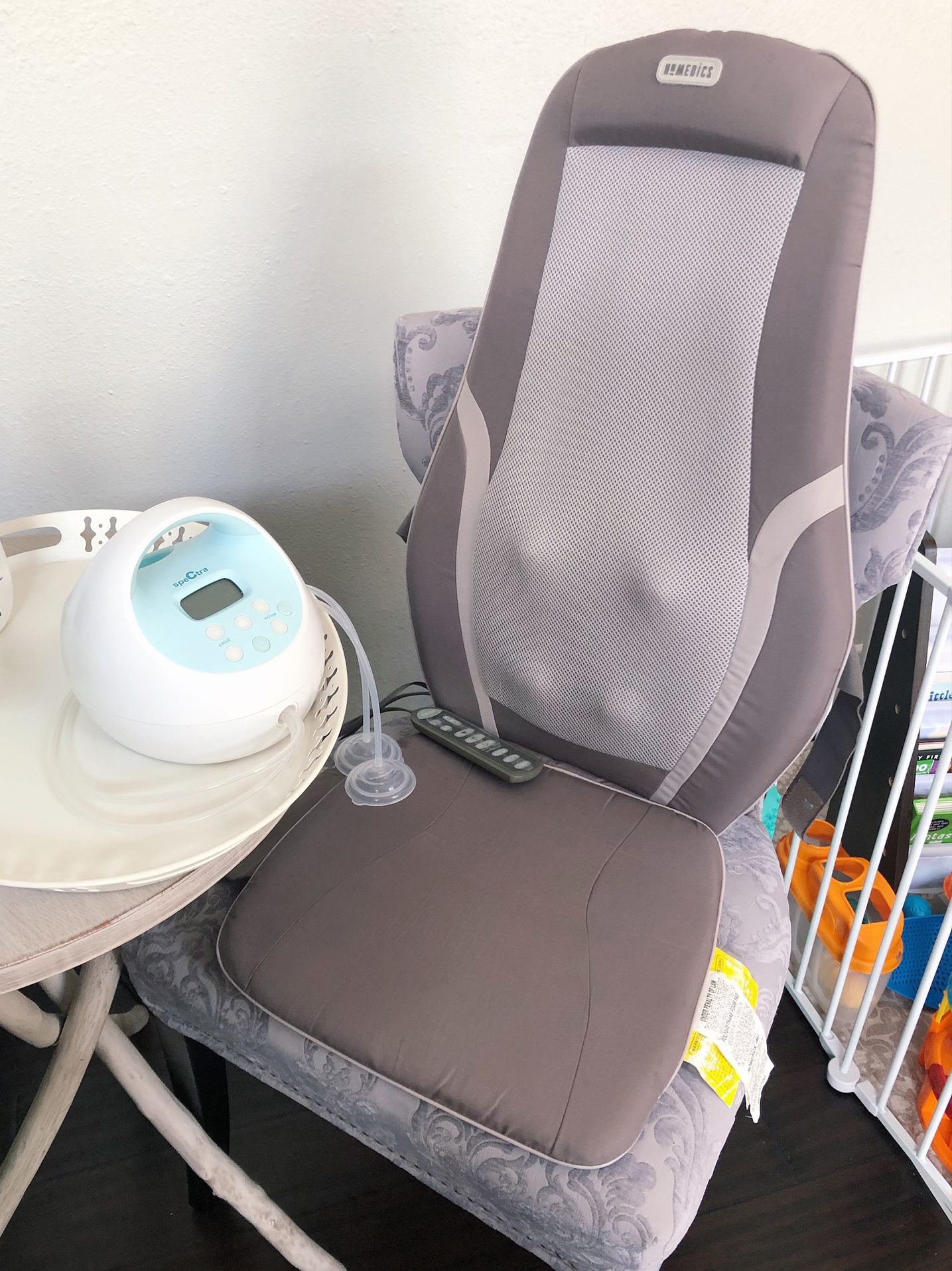
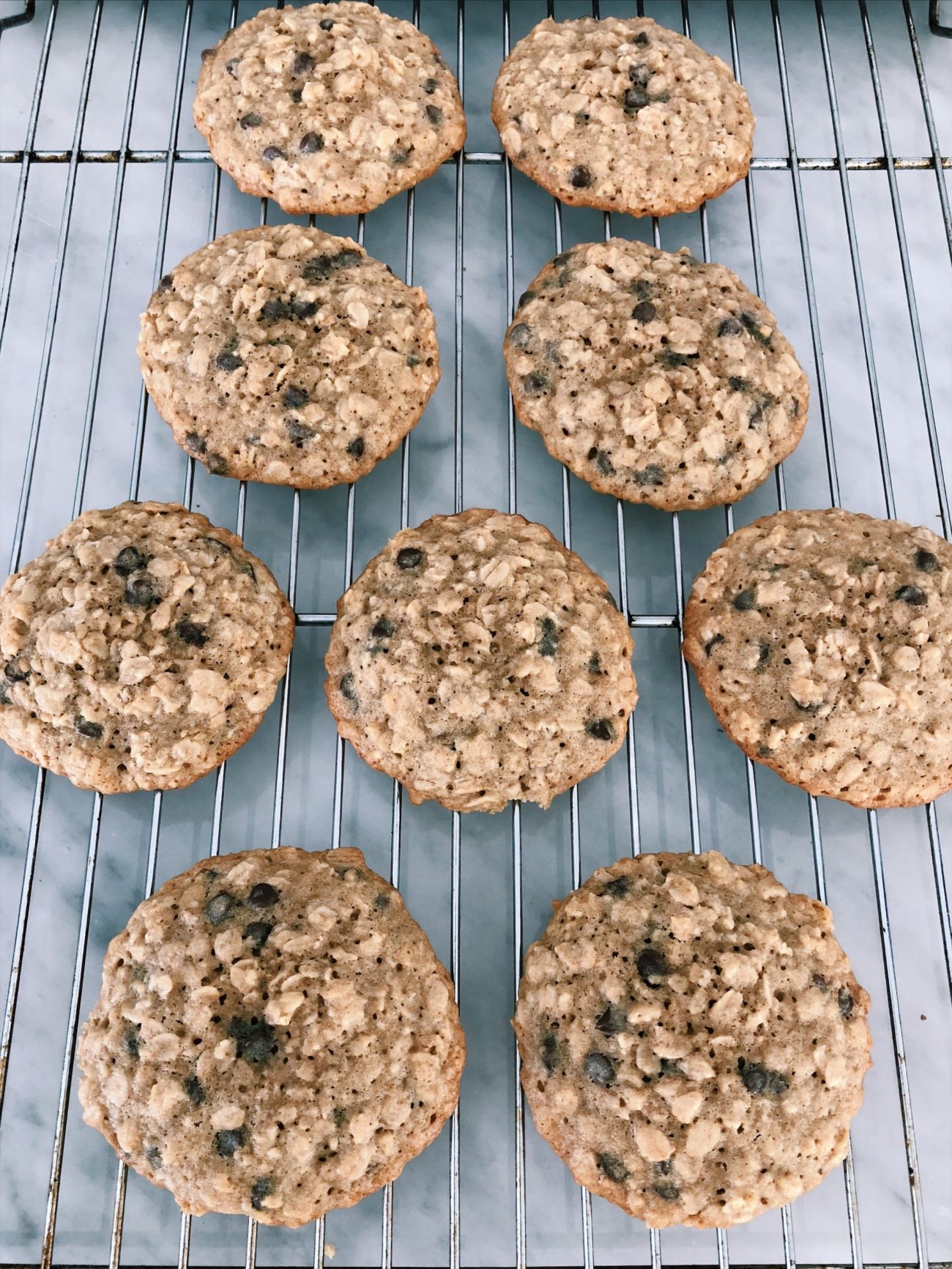
2. GET a good hands-free pumping bra
Even if you don’t plan on pumping much, having a hands-free bra makes a big difference!
- My go-to hands free pumping bra: This affordable hands free pumping bra on Amazon starts in size XS and comes with a band extender. It’s unlined, and each side also clips down for nursing, if you like to nurse one side while pumping the other!
- Clip on pumping attachment: Instead of a full bra, I also like this Bravado clip-on attachment (also sold at Nordstrom) but it only starts in size S so it doesn’t fit me as snugly as the one above. Loved that this works with my H&M nursing camisoles. You simply unclip the front of your nursing bra / cami and then snap this attachment on over it to pump hands-free.
- Padded option: This doesn’t hold a pump, but Bravado makes really comfy nursing bras in general. I love the Belle convertible bra which has light padding on it and a very smooth material.
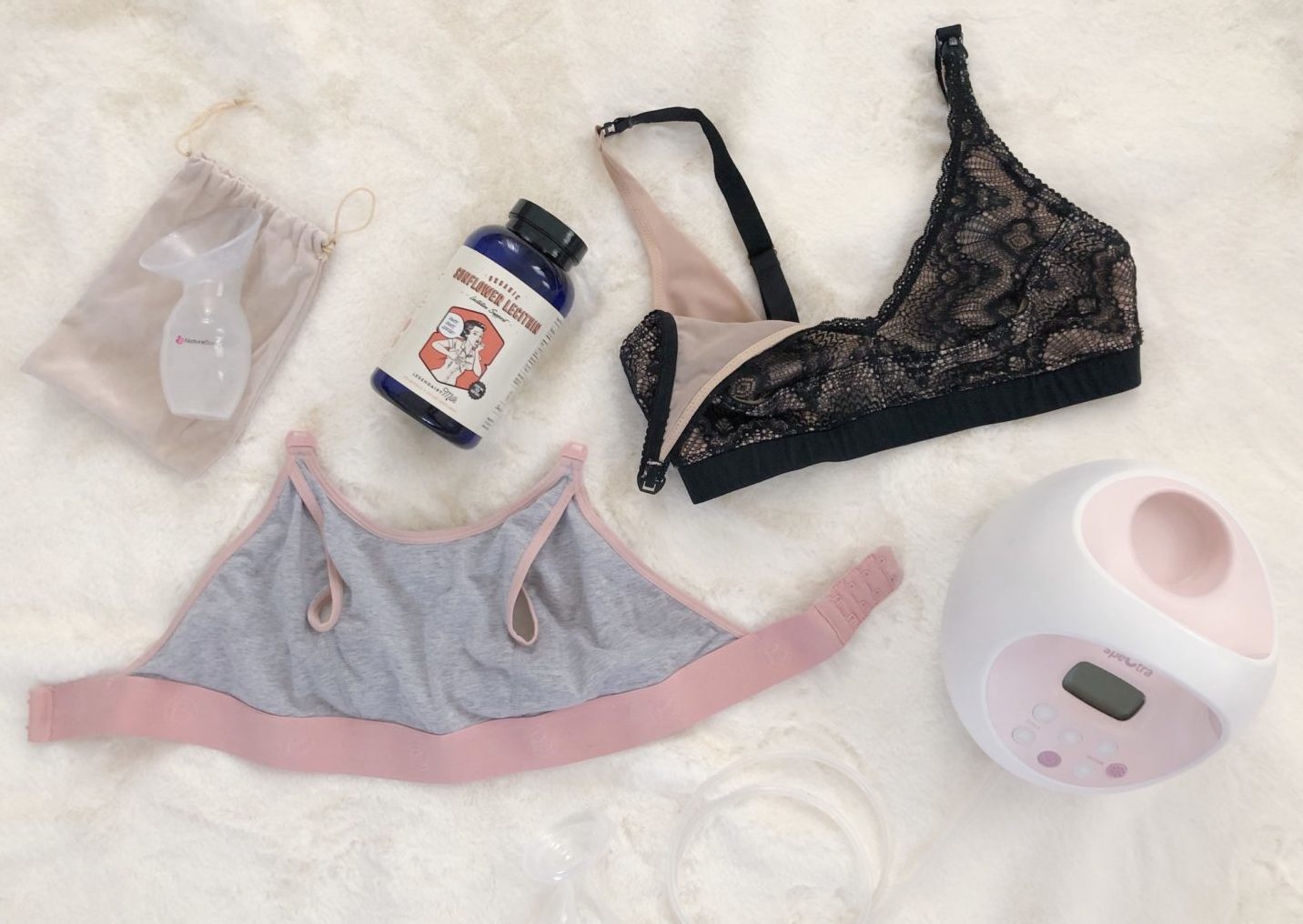
3. Bookmark Kelly Mom + Follow @legendairymilk
Kelly Mom is an incredible resource for straightforward, well organized motherhood information. Nick and I both also LOVE following Legendairy Milk on Instagram for everyday nursing + pumping info and tips/hacks shared by fellow moms (here’s their main site). Some useful tips include:
- Testing for high lipase milk. As it turns out, I did have high lipase and had to scald my pumped milk.
- Maximizing milk letdowns
- Suggested Spectra pump settings which helped me get a second letdown each pumping session.
- Thawing frozen breastmilk
- Refrigerating pump parts in a bag (in the comments). Technically not a recommended practice but I know this makes a big time difference for moms who need to pump at an office.
- Busting a clog using a silicone pump
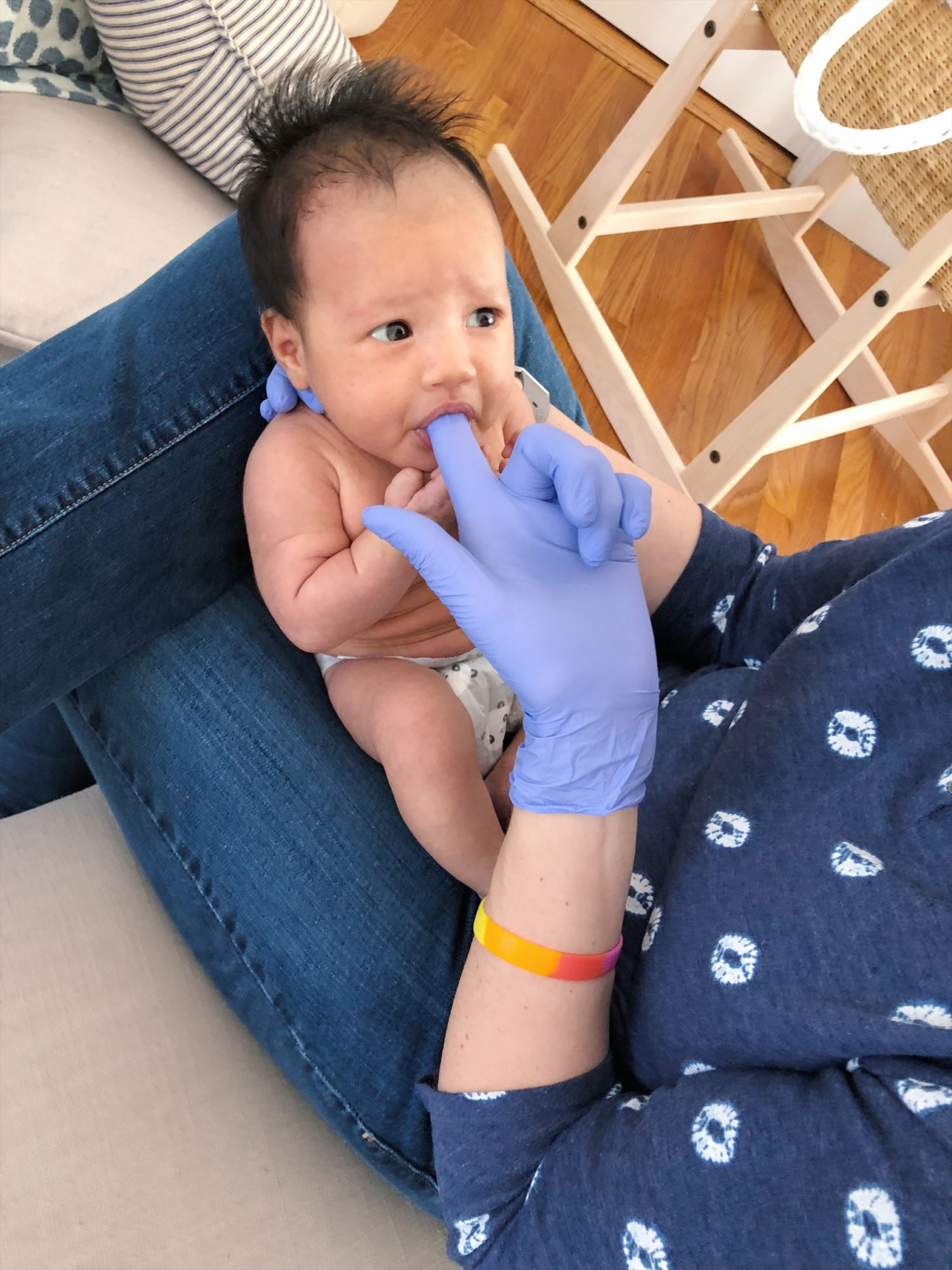
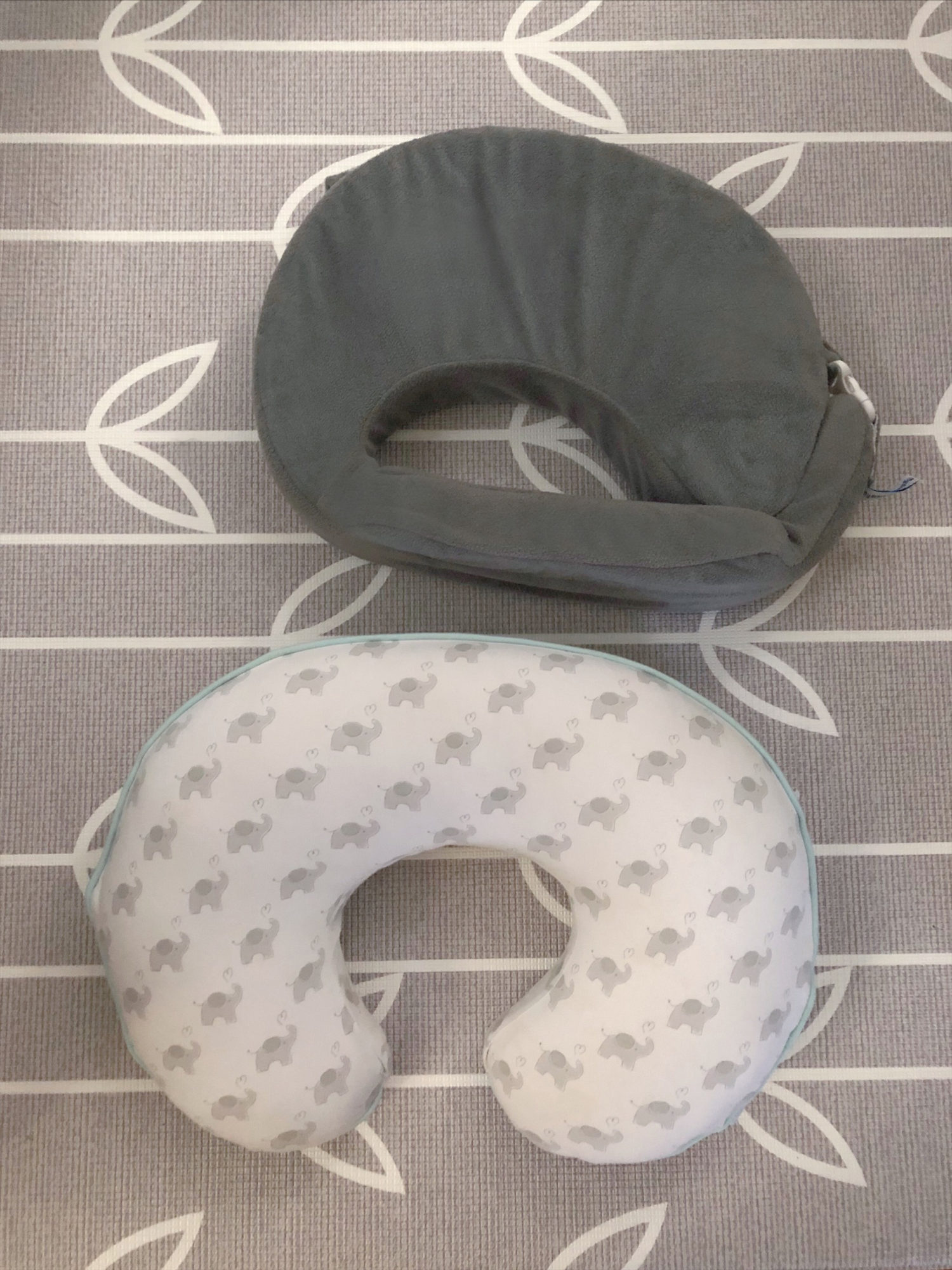
4. SCHEDULE in-home visit(S) with a Reputable lactation consultant
I can’t recommend this enough! Also, check if your insurance will cover the visit(s). The nurses and lactation consultants at my birthing hospital and at the dr’s office were helpful, but it was a lot of different opinions and methods being thrown at me immediately after giving birth. After settling home with my newborn, I had all sorts of new questions and challenges come up. Here’s a few things my IBCLC (certified lactation consultant) helped with:
- Weighed Nori before and after feedings on her lactation scale (supposedly a lot more precise than consumer scales like on our diaper changing pad) to determine how much milk she consumed in one session.
- Taught me how to use my pump settings properly and measured me for proper pump flange size, both of which I was CLUELESS about.
- Observed and guided a nursing session for proper positioning and a deep latch. Inspected Nori’s mouth, jaw and around her tongue (a doctor at the birthing hospital had already suggested we have her tongue tie addressed)
- Discussed my questions on feeding schedules, building and maintaining milk supply, probiotics, gassiness and fussiness after feedings
I asked around a lot and was referred to Rachel O’Brien (based in the greater Boston area) and loved her, so if you worked with a lactation consultant or service whom you were very happy with, please leave a comment with their info and location! All this being said, consultants and doctors will always have varying opinions, so sometimes it’s important to trust your own intuition.
Along the same vein, you can also look for local breastfeeding support groups to join. My birthing hospital had one with free weekly sessions that I didn’t know about until later!
5. research pumps + understand pump parts / settings
Ideally start prior to giving birth, so you’re not sleep deprived & googling pump basics like I was!
A. research & Choose a pump
Some FAQ’s I’ve gotten on this topic:
What is your overall favorite pump?
After trying several brands of pumps, my favorite for first time pumpers is the good ole Spectra S1. If you’re new to pumping especially, a clear flange (the funnel-like piece) with complete visibility is important for properly aligning your nipple each time. The Spectra also lets you toggle easily back and forth between letdown and expression modes and various speeds with good suction.
Tips: A reader (thanks, Amanda!) shared a tip to use these adapters and pump directly from a Spectra into storage bags so you don’t have to lose milk transferring from bottle to bags. I also saw on Legendairy Milk that a lot of moms use the Freemie cups (they look like this) with a Spectra pump.
What’s the difference between the Spectra S1 and S2?
The Spectra S1 (blue) and S2 (pink) are the same except the S1 blue one is portable because it has a rechargeable battery (remember by “blue” = battery). I highly recommend the blue one for this reason, but because I didn’t do my research I ended up with the pink one. If your insurance will only cover the cheaper S2 pink one, a hack is you can buy and attach this rechargeable battery pack.

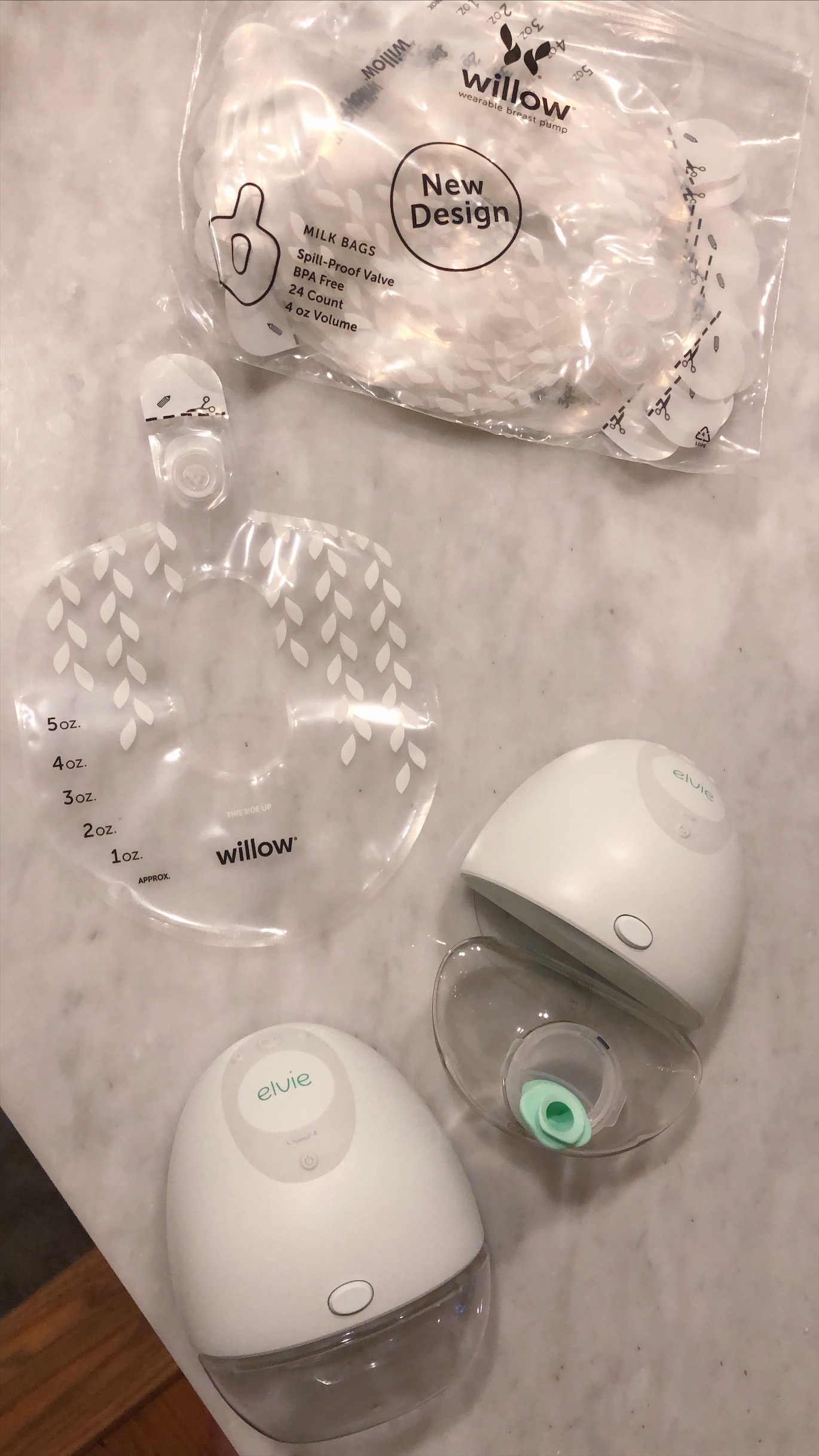
Amongst wearable pumps, do you prefer the Elvie or the Willow?
I received both of these for press purposes, and must say these tube-free, cord-free pumps that tuck into your bra are revolutionary and feel SO freeing to use compared to traditional pumps. I’ve pumped easily with these in the car, on the plane, and even on a party boat in Miami during a bachelorette. However, despite the traditional Spectra being more cumbersome, I got more milk output using it. Partially due to the suction power, but also because I could better align the pump flange and tailor the settings (UPDATE: with my second baby, I started following a tip with Elvie that made a big difference for me and increased output – first put the clear breast shield on to ensure my nipple is properly aligned inside, before attaching the rest of the pump onto the shield, while still holding the shield in place).
Between the Elvie or Willow I don’t have a clear recommendation because it’ll depend person to person. I like the Elvie better because it’s smaller and lighter in weight (although if you are smaller framed, both brands will feel quite noticeable inside your bra and visually add a few cup sizes), and the learning curve on the Elvie was easier for me. However, some find the Willow to have better suction power. Previously a big difference was that the Willow only took one-time use bags but they also have the option of reusable containers now just like Elvie.
B. Determine your proper flange / breast shield size
After choosing a pump, you can test it out and then measure your proper flange size. A lot of women may not be using the right size, and this can affect milk output with any pump and cause pain or discomfort. You should be measuring after pumping because nipples expand during pumping, also I’ve heard your flange size may change over time.
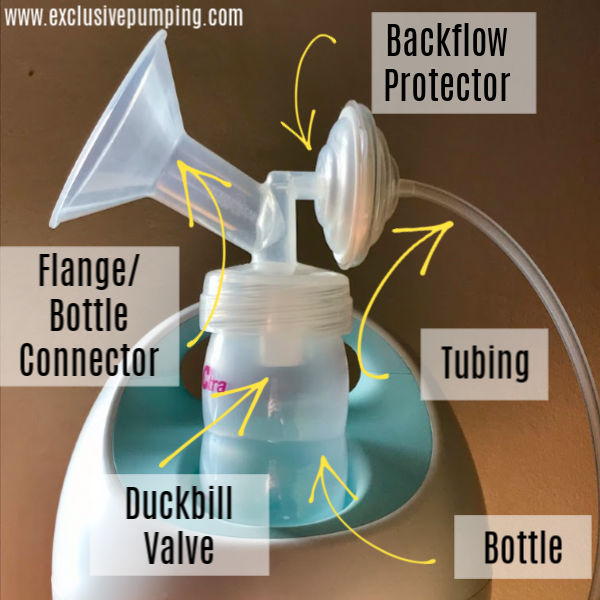
C. order replacement pump parts in advance
Pump parts (especially duckbill valves) in need of replacement are often the culprit for decreased pumping output. A valve could tear or get stretched out over time and definitely affect the pump effectiveness, or you could lose a piece like I did and go into a frenzy borrowing parts from a neighbor.
On a similar note, my first few times pumping I would often mis-connect a pump part like the backflow protector or tubing by just a little bit while assembling it, and it would create an imperfect suction seal so the pump wouldn’t be as effective. Or, the pump part wasn’t fully dry after washing which affected the suction. So when troubleshooting, I would always check these aspects first.
6. EASE into nursing in public
How to get comfortable nursing or pumping in public was one of the top questions I received over Nori’s first year. I didn’t want to let nursing hinder us from going about our day and traveling, but it took practice to get comfortable. Here’s a few tips for easing into it:
- Start at a “safe” place like a new mom’s group, lactation support group, mother’s room at a department store, or in the home of a fellow mama friend. The first few times I nursed at restaurants, I would pick off peak hours like mid afternoon and ask for a quiet table in the back. I’ve also nursed in my car more times than I can count just because it’s more comfortable sometimes!
- Know your rights to nurse in public and prepare a comeback in case someone makes a comment.
- Dress for ease. I layered an H&M nursing tank under pretty much everything except for strappy dresses. I like them for added coverage for when my topmost layer was either lifted up or pulled down to nurse.
- No shame in using a cover if it makes you feel more comfortable. I was shocked when I got criticized by breastfeeding advocates online for using a cover. A big part of supporting breastfeeding is in supporting every mom’s CHOICE in regards to it. I loved these knit multi-purpose covers and always had one in my diaper bag to use as a blanket or carseat cover, but I did need to use my hands to hold open the top when I wanted to see Nori’s head. Several of you prefer apron-style covers which give hands-free visibility. If you plan on using a cover, I suggest getting your little one used to it early on.
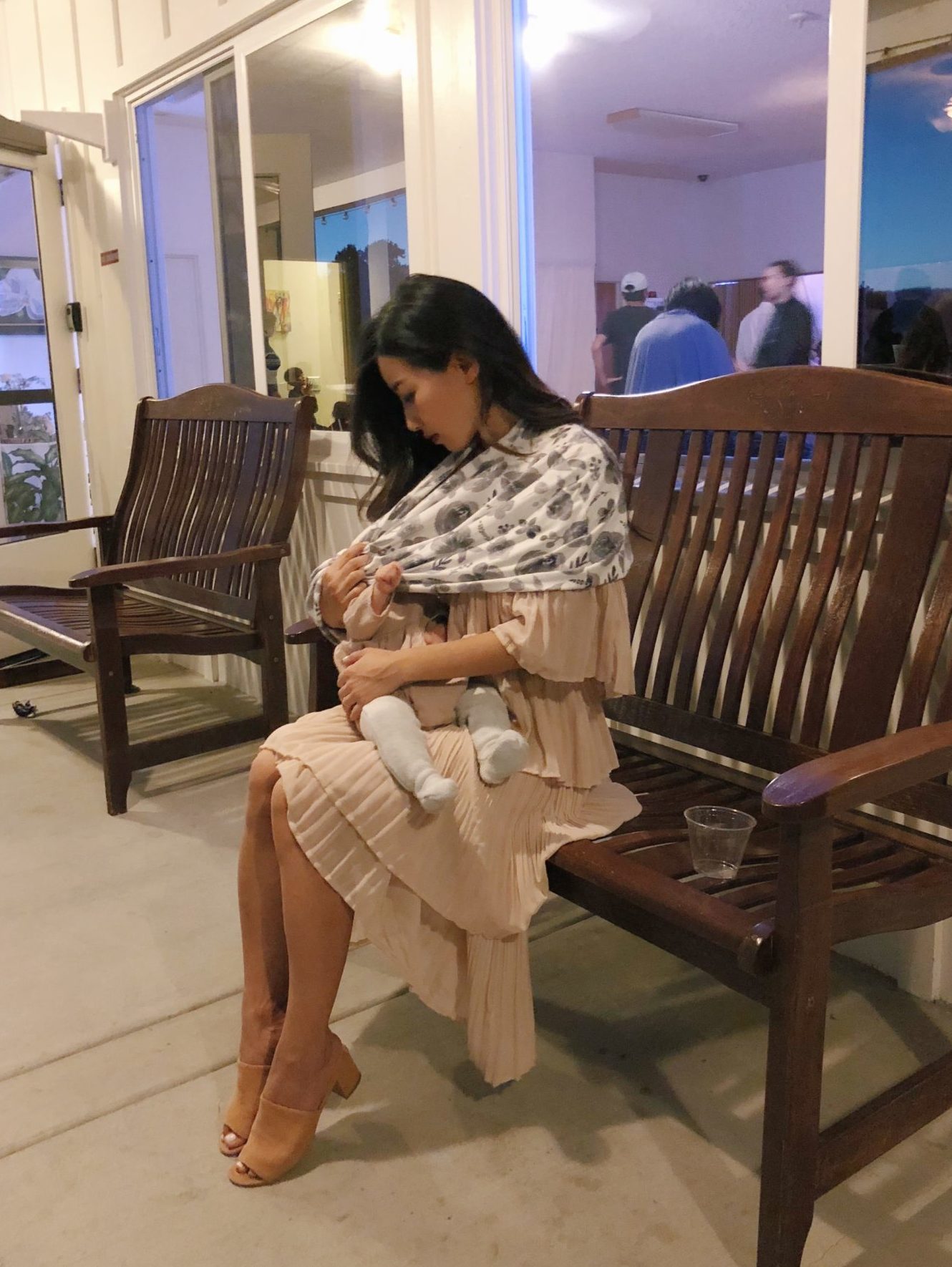
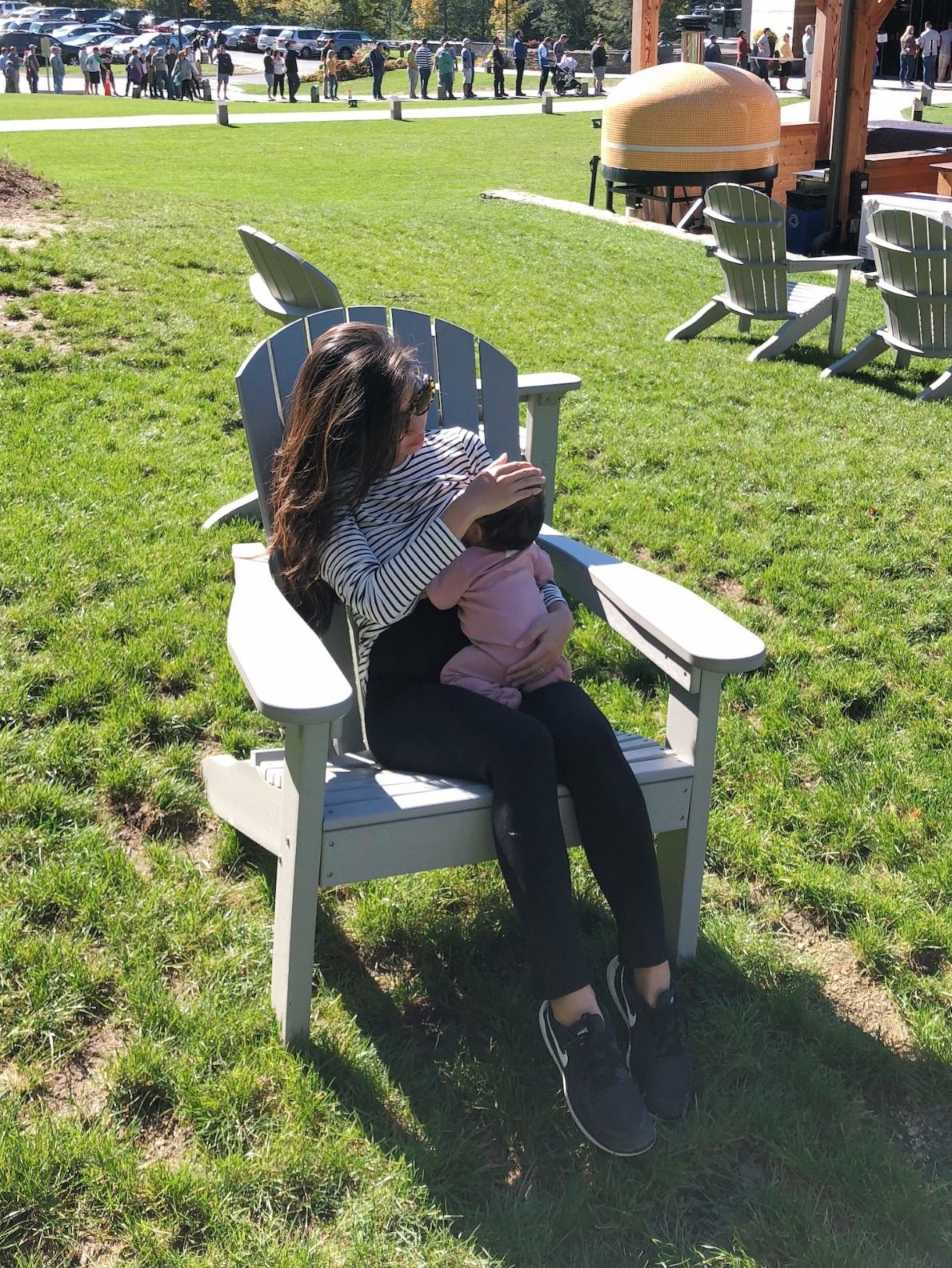
Mamas, please pass along any tips that helped in your breastfeeding or pumping journey!



